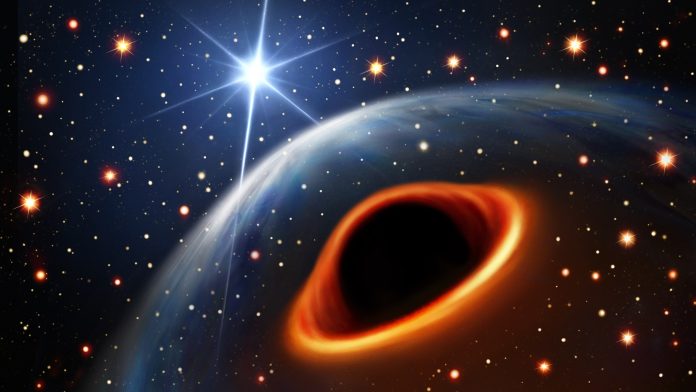Astronomers have recently reported detection of such a compact object of about 2.35 solar masses in the globular cluster NGC 1851 in our home galaxie Milkyway. Because this is at the lower end of “gaură neagră mass-gap”, this compact object could be either a massive neutron stea or the lightest gaură neagră or some unknown star variant. The exact nature of this body is yet to be determined. However, what is more interesting is that, unlike the similar compact body detected in the merger event GW 190814, this compact body is found in binary system formation as the companion of a pulsar. If this compact body in binary formation with the pulsar is determined to be a gaură neagră in future, this would be the first “pulsar – gaură neagră system” known.
Când combustibilul se epuizează, fuziunea nucleară în stele se oprește și nu există energie pentru încălzirea materialelor pentru a echilibra forța gravitațională. În consecință, miezul se prăbușește sub propria sa gravitație, lăsând în urmă o compactă remanent. This the end of the star. The dead star could white dwarf or neutron star or gaură neagră depending upon mass of the original star. Stars between 8 to 20 solar masses end up as neutron stars (NSs) while more heavier stars become găuri negre (BHs).

Masa maximă de stele neutronice is about 2.2 solar masses while găuri negre formed at the end of stellar life cycle are usually of more than 5 solar masses. This mass-gap between the lightest black home (viz. 5 M⊙) and the heaviest neutron stea (viz. 2.2 M⊙) se numește „decalaj de masă al găurii negre”.
Compact objects in “gaură neagră mass-gap”
Compact objects falling in mass-gap (between 2.2 to 5 solar masses) are not commonly encountered nor are well understood. Some compact objects observed in undă gravitațională events are in the mass-gap region. One such recent instance was discovery of a compact mass of 2.6 solar masses on 14 August 2019 in the merger event GW190814 which resulted in black home of final black hole about 25 solar masses.
Obiecte compacte în decalaj de masă în formarea unui „sistem binar”.
Scientists have recently reported detection of such a compact object of about 2.35 solar masses in the globular cluster NGC 1851 in our home galaxy Milkyway. Because this is at the lower end of “gaură neagră mass-gap”, this compact object could be either a massive neutron stea or the lightest gaură neagră or some unknown star variant.
Natura exactă a acestui corp rămâne încă de stabilit.
Cu toate acestea, ceea ce este mai interesant este că, spre deosebire de corpul compact similar detectat în evenimentul de fuziune GW 190814, acest corp compact se găsește în formarea unui sistem binar ca însoțitor al unui pulsar binar de milisecunde excentric.
If this compact body in binary formation with the pulsar is determined to be a gaură neagră in future, this would be the first “pulsar – gaură neagră system” known. This is what pulsar astronomers are looking for decades.
***
Referinte:
- LIGO. Comunicat de presă – LIGO-Virgo găsește un obiect misterios în „Mass Gap”. Postat pe 23 iunie 2020. Disponibil la https://www.ligo.caltech.edu/LA/news/ligo20200623
- E. Barr et al., A pulsar in a binary with a compact object in the mass gap between neutron stars and black holes Science, 19 ianuarie 2024. DOI: https://doi.org/10.1126/science.adg3005 Preimprimare https://doi.org/10.48550/arXiv.2401.09872
- Fishbach M., 2024. Mister în „decalajul de masă”. ŞTIINŢĂ. 18 ian 2024. Vol 383, Issue 6680. pp. 259-260. DOI: https://doi.org/10.1126/science.adn1869
- SARAO 2024. Știri – Cea mai ușoară gaură neagră sau cea mai grea stea cu neutroni? MeerKAT descoperă un obiect misterios la granița dintre găurile negre și stele neutronice. Postat pe 18 ianuarie 2024. Disponibil la https://www.sarao.ac.za/news/lightest-black-hole-or-heaviest-neutron-star-meerkat-uncovers-a-mysterious-object-at-the-boundary-between-black-holes-and-neutron-stars/
***






































